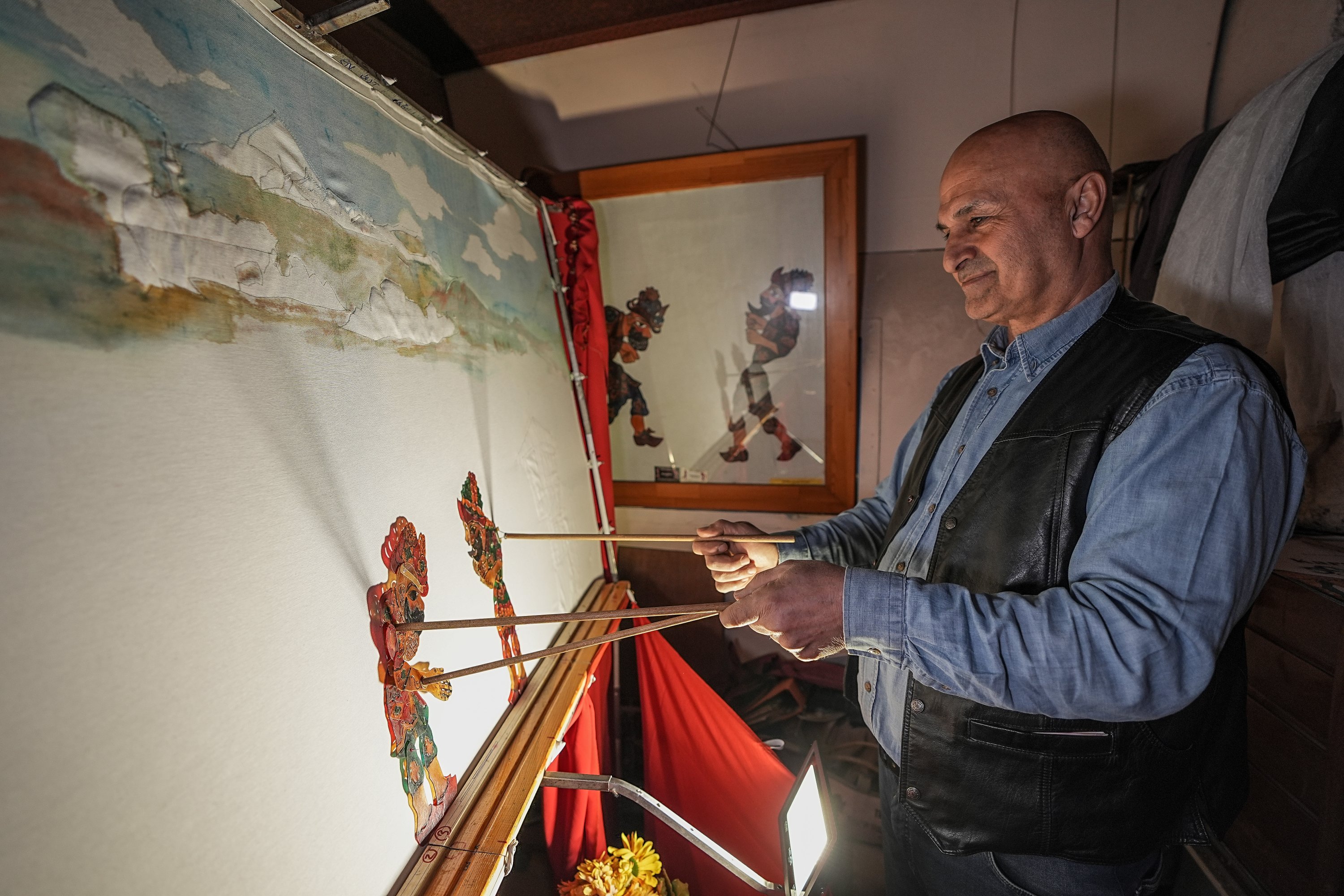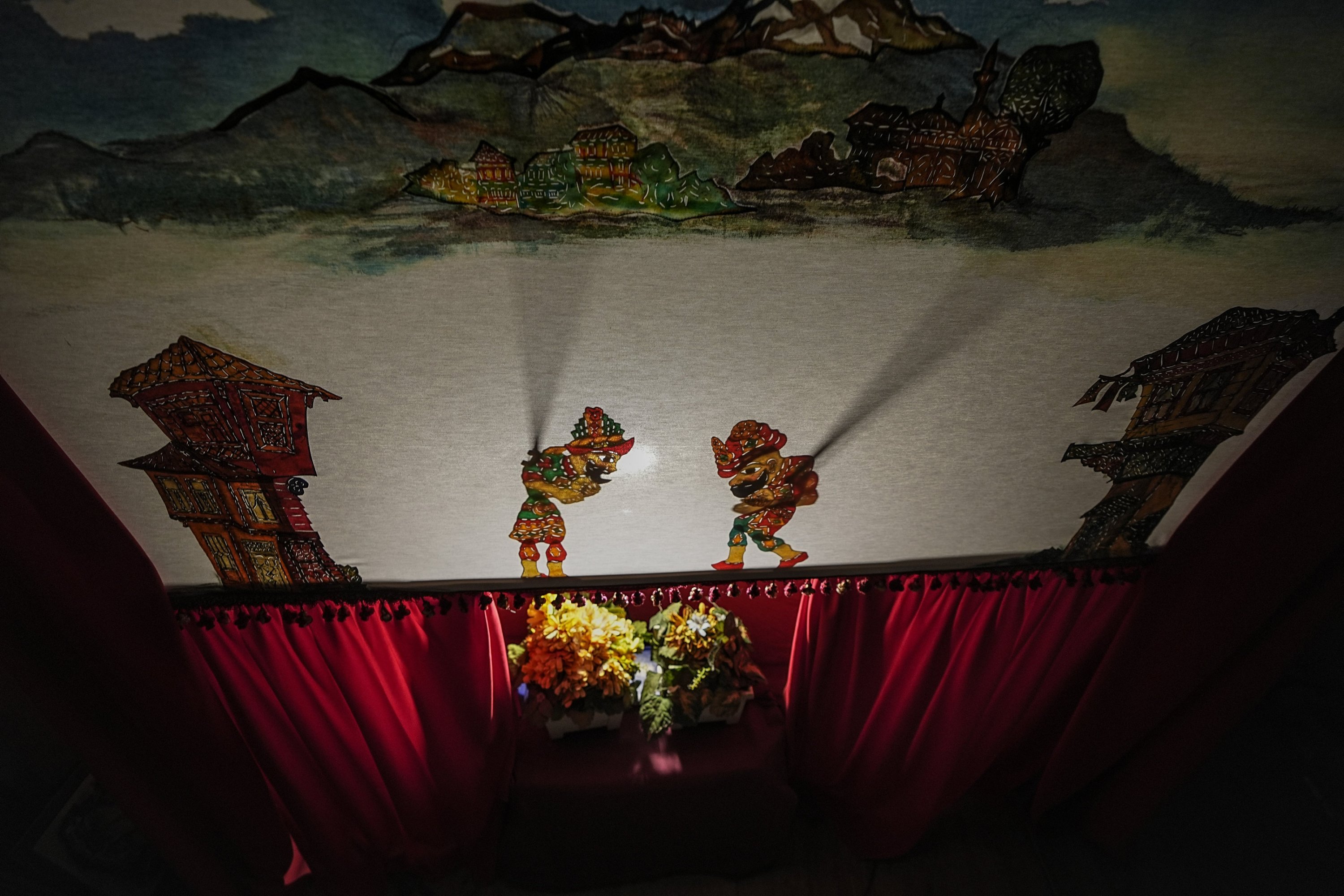© Turkuvaz Haberleşme ve Yayıncılık 2025
The "Karagöz" shadow play is a traditional Turkish art form with a history spanning approximately 700 years. Recognized by UNESCO as part of the Intangible Cultural Heritage of Humanity, it will engage audiences in Türkiye's Bursa throughout the Ramadan season.
Master puppeteer (hayali) Nevzat Çiftçi has innovatively combined traditional elements with modern techniques to present performances that appeal to both children and adults, reminiscent of past Ramadan festivities.
Post-iftar performances will take place in both indoor venues and open-air settings, featuring witty dialogues between Karagöz and Hacivat, promising to both entertain and provoke thought.

Nevzat Çiftçi shared with an Anadolu Agency (AA) correspondent that anticipation for Karagöz and Hacivat peaks during Ramadan among audiences of all ages.
"Karagöz has the unique ability to unite everyone in a single performance, allowing both young and old to experience the same enjoyment," Çiftçi remarked.
This year, without altering the original structure, Çiftçi plans to introduce a new technique within the traditional framework of classical Karagöz plays (kar-ı kadim, meaning "ancient style"). By integrating puppetry that extends beyond the screen, they've developed a new show titled "Karagöz Competes." In this performance, Karagöz challenges himself and his own techniques. Accompanied by live music, this distinctive play is scheduled for later in Ramadan.
Çiftçi also mentioned a diverse repertoire, including plays such as "Karagöz's Wedding," "Karagöz's Grand Marriage Play" and "Karagöz as a Physician," all set to be presented to audiences.
Associate professor Ibrahim Öztahtalı, director of the Karagöz and Puppet Theater Application and Research Center (KARAKUM) at Bursa Uludağ University, emphasized that the Karagöz and Hacivat ensemble is prepared to perform not only during Ramadan but throughout the entire year.

Highlighting the significance of the "Karagöz" stage in traditional Turkish theater, Öztahtalı stated: "This Ramadan, we've made extensive preparations to delight both locals and visitors from outside Bursa. Karagöz and Hacivat are ready for Ramadan with brand-new performances."
Öztahtalı underscored the continuous relevance of "Karagöz" beyond the Ramadan period, noting: "'Karagöz' embodies the common sense and perspective of Anatolia across the Turkic world. Recognized by UNESCO on the Intangible Cultural Heritage of Humanity list, it's a vital legacy we must pass on to future generations. At KARAKUM, we are dedicated to training new puppeteers and fostering interest in 'Karagöz' through our ongoing activities."
He extended an invitation to everyone for the live music-accompanied Karagöz performances, which will be presented in collaboration with the Bursa Uludağ University Turkish Classical Music Choir during Ramadan.
Karagöz and Hacivat are central figures in traditional Turkish shadow theater, known as "Karagöz." This art form gained prominence during the Ottoman era and has influenced various regions, including Türkiye, Syria, Egypt, Greece, Bosnia and Herzegovina, and Adjara. The performances typically revolve around humorous interactions between Karagöz, representing the unrefined but straightforward public, and Hacivat, embodying the educated class with his poetic and literary language. Their contrasting personalities create a dynamic that is both entertaining and reflective of societal nuances.
The craft of "Karagöz" involves intricately designed puppets made from materials like camel or water buffalo hide, manipulated behind a lit screen to cast colorful shadows. This traditional form of entertainment has been cherished for centuries and continues to be a significant cultural expression in Türkiye and beyond.
